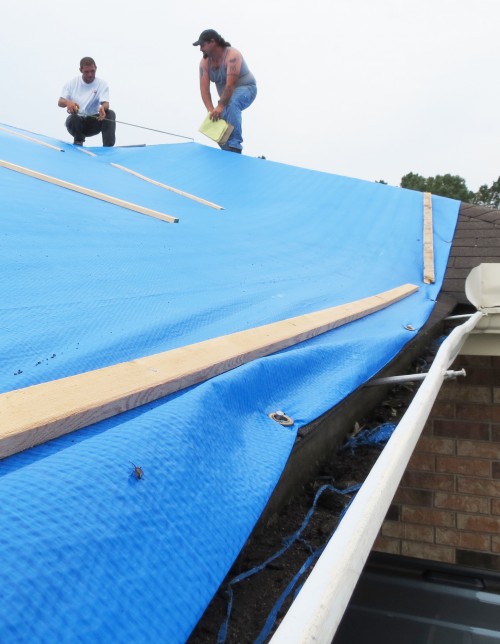
South Lafourche pushes forward, despite injuries
September 18, 2012
Volunteers still needed for local Isaac relief
September 18, 2012The Terrebonne Parish School District will admit it is not perfect, but likes to think it can hold its own. It has seen student performance improve 12 percent during the past five years. Dropout rates are at 7.3 percent according to the most recent data and graduation levels are 78 percent. The school district has even survived budget cuts without having to take away filled jobs.
However, belt-tightening has reached a final punch and the otherwise patient Superintendent Philip Martin said, after conducting statistical research, there are no more holes that can be made.
What bothers Martin, more than living on a reduced budget is realizing when compared among Louisiana’s 86 school districts, the one he leads is at the bottom in regards to revenue generated by local public contributions.
“We are dead last,” Martin said as he surveyed numbers showing Terrebonne Parish schools trailing in taxpayer support for public education. “It is shocking, almost alarming.”
Martin presented his findings before the Terrebonne Parish School Board Finance Committee and received authorization to launch a public survey for answers.
“I’m not saying [a tax request] won’t happen at some time,” Martin said. “This was just information I brought to the finance committee to make the school board aware of where we stand financially in comparison to the rest of the districts, but we need to do something.”
According to statistics compiled by the Louisiana Department of Education, the property tax millage rate for public schools in Terrebonne Parish during the 2009-10 school year was 8.71 mills. By contrast the highest locally financed education system, with 75.88 mills generated that year, was the Caddo Parish School District.
In the Tri-parish region, Lafourche Parish property owners paid 42.76 mills into their public schools while taxpayer funded schools in St. Mary Parish received 34.51 mills.
The average millage rate for public school financing in Louisiana is 42.29 mills.
At the same time, 2.08 percent of sales taxes collected in Terrebonne Parish go to public schools. This falls in comparison to 2 percent for Lafourche Parish and 1.75 percent in St. Mary Parish. Back in Caddo Parish, sales tax revenue totaled 1.5 percent during the documented period.
“I honestly had no clue about that,” said Niki Barr when told where Terrebonne Parish schools stand regarding locally generated funding. “We want our education to be better, but we don’t want to do anything about it?”
Barr, whose husband, Myles Barr, teaches civics at Ellender Memorial High School, voiced her parental concern having found that classroom resources are, in her opinion, lacking.
The Barr’s daughter, Sara, is a sixth-grade student at Broadmoor Elementary School. She reported to her mother that she could not bring home books to study because there were not enough for all students.
“We asked for a science book, and the teacher said, ‘We don’t have science books,’” Niki Barr said. “I have to have a book at home because I want to review it with my child. What they are doing is homework in class. I want [my child] bringing material to me. I want to know what she is learning and that she is learning, not just going off a study guide.”
Barr said a lack of funding may explain why she has not only experienced, but heard other claims of schools not having books and supplies for students. She noted that she is one parent concerned about resources.
Martin has continually said financial cuts would not take away from classroom. “I’m not going to let the students fail because of the budget,” he said.
Martin added that he is determined to find a way to generate more education revenue locally.
The superintendent is working to form public panels, involving business and civic leaders as well as parents and teachers to explore options.
“Right now it is a concept,” Martin said. “There is no definitive plan. There is no guarantee there will be a plan and there is no timeline in forming community panels. I’m simply going to give them the facts. I don’t think the residents of Terrebonne Parish want to have the worst funded public education system in the state of Louisiana. So, I’m going to find out how the community feels about that.”
“I really hadn’t given much thought to [Terrebonne Parish schools being at the bottom of local revenue collections,] Terrebonne Parish School Board Finance Committee Chairman Don Duplantis said. “I’m waiting to see what the staff comes up with and what they plan to do with any additional revenues we may collect.”
Duplantis and Martin agreed that for many years Terrebonne Parish relied heavily on Section 16 leases to help finance schools. “At one time we received millions of dollars from oil royalties,” Martin said. “Last year we got $112.”
Louisiana Federation of Teachers President Steve Monaghan said Terrebonne Parish is not alone when it comes to facing the realities of financing public education locally.
“There is a tendency for finger pointing,” Monaghan said. “Finger pointing arises when a crisis arises. Louisiana’s problem with funding public schools is historical.”
Monaghan said each state has different funding structures “In Texas they rely completely on property taxes,” he said. “So you have the Robin Hood effect where rich districts are targeted by poor districts.”
In Louisiana, however, the educator representative said no solid statewide plan has ever been adopted or lasted very long.
“In 1991 the state revised its formula, but there was never a sit-down to ascertain the actual cost of educating a child based upon the things you set as goals,” Monaghan said.
Louisiana’s state funding formula was hit with lawsuits, Monaghan said, but then settled providing a minimum of educational support. “The equitability question still never got addressed,” he said.
In January 2006, the Louisiana formed a state education task force to look at financing, but it never produced results to determine resources that could match goals.
“We haven’t even sat down and done the math,” the teachers’ federation leader said. “About four years ago there was a motion made to do an adequacy study on Louisiana school financing. It was tabled [by the Board of Elementary and Secondary Education Minimum Foundation Task Force]. That was the last discussion we have had.”
Monaghan alleged BESE stopped the study to head-off exposing state underfunding of education by as much as $6 billion.
BESE Dist. 3 member Lottie Beebe said she does not disagree with Monaghan, but admitted not knowing details of activities before coming on the board in January. “There has been very little discussion about allocations to school districts,” she said. “I agree there should be more discussion moving forward and greater efforts to have an open-line of communication with superintendents.”
“What frustrates me in any system today is the mantra to the public: ‘There will be no reduction in service,’” Monaghan said. “There are districts that have furloughed teachers. There are districts that have increased class size. In order to provide this false assurance for the public, [elected officials use] false language that everything precedes as normal. It is not proceeding as normal.”
Martin said although local schools have ranked better academically than more than half the state’s other education centers, he believes his district has failed students when it comes to financial investment.
When asked if having academic performance improve with reduced revenue stands in opposition to the idea that better funding means better grades, Martin said that was too sweeping of an assumption.
“That is a fair observation but not necessarily accurate,” Martin said. “My answer would be, ‘Yeah, give me adequate funding and see where we go.’”
Martin said the highest achieving academic districts in Louisiana are funded locally at the highest levels in the state. “There is a connection between funding and grades in the school system,” he said.
The West Feliciana Parish School District leads the state in schools earning grades of A or B by the LDOE, yet its taxpayer funding is below state averages with a millage rate of 25.77 mills and sales tax revenue of 2 percent.
On the other side of state averages, Cameron Parish Schools topped the state list for achieving target growth, while revenue offered by local taxpayers came in the form of 52.18 mills.
As for the highest funded Caddo Parish schools? They are listed 49th in the state for students performing at or above grade level, while Terrebonne Parish is ranked 14th in the state.
The Terrebonne superintendent said his district may be the exception to a rule because it does rank 3rd through 25th overall academically on various standardized tests. He is simply not satisfied being that low on the state lists for grades or educational funding.
“The local folks will have to see by their capacity if they are providing what they can to the community,” Monaghan said. “There are communities out there that don’t have a lot of resources.
“Parishes that have needs and communities that know their wealth fairly well have to make a decision whether or not they are providing for the next generation.”
“You pick any district in Louisiana and they get more than us,” Martin said. “The state average spent per pupil is $12,400. We are at $9,000. I think there is a startling problem and I want to bring people the facts.”
Terrebonne High School Master Teacher Dr. Wilbert Boudreaux, master teacher greets students as they switch classes during the day, but making strides on the laughter is a growing concern regarding future financing of education in the school district that falls last in the state for local funding.













